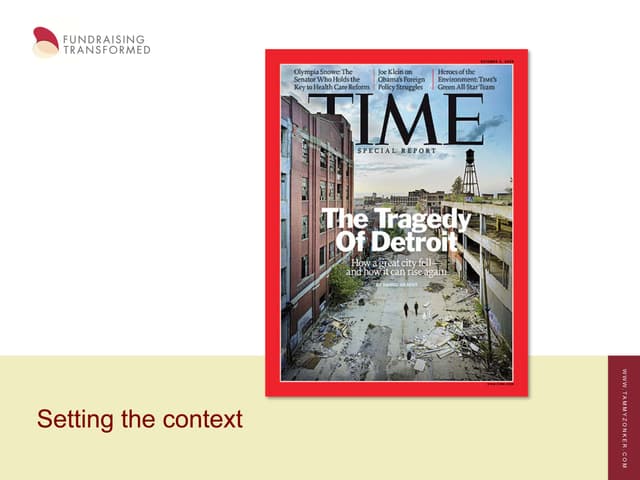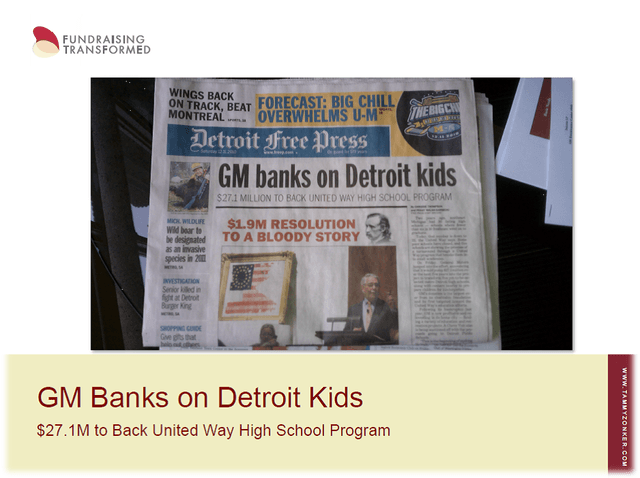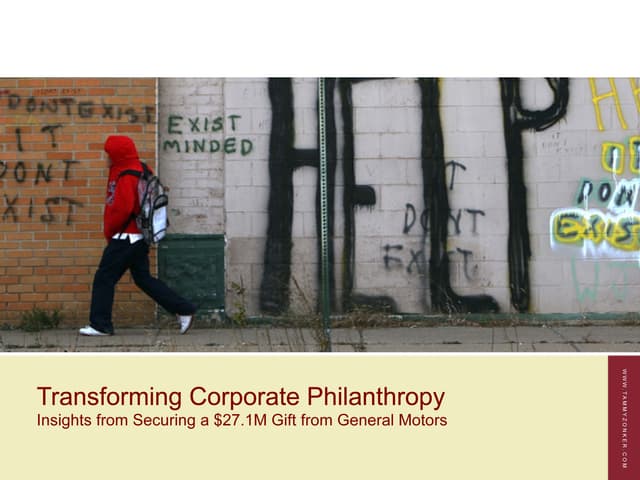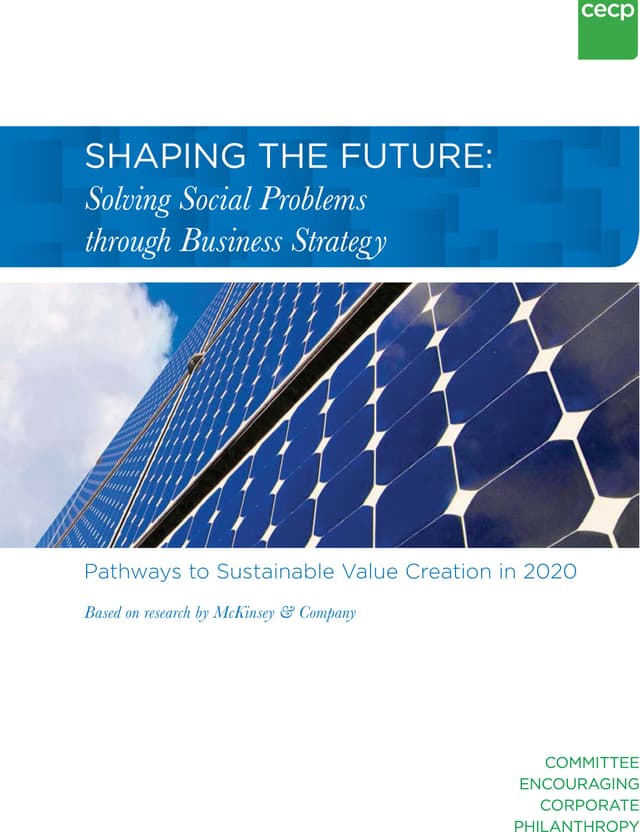United Way for Southeast Michigan (UWSEM): lessons from a $27.1 million corporate gift
- Exhibited by
- Tammy Zonker
- Added
- October 08, 2014
- Medium of Communication
- Target Audience
- Corporations and major gift.
- Type of Charity
- Community & social services, education, healthcare.
- Country of Origin
- USA.
- Date of first appearance
- December 2010
SOFII’s view
This award-winning initiative from United Way shows that partnerships between a charity and a commercial organisation work best when the donor can get as close to the cause as possible through visits, meeting with beneficiaries and can see the change that they are making.
Creator / originator
Tammy Zonker, consultant and fundraising practitioner, Fundraising Transformed
Summary / objectives
To
secure human and financial investment from top corporate leaders to support
United Way for Southeast Michigan’s (UWSEM) transformational goal of making
Greater Detroit a top five city to work and live by 2030.
Tammy Zonker had the privilege of leading the team effort, which included UWSEM CEO Michael Brennan, UWSEM vice-president of education initiatives Michael Tenbusch and campaign cabinet volunteer chair person Jeffrey Bergeron, managing partner at Ernst & Young to secure an investment of $27.1 million from General Motors to UWSEM’s educational turn-around initiatives. The gift was cultivated in 2010, during the General Motors bankruptcy and announced in a press conference in December 2010, following General Motors’ return to the New York Stock Exchange (NYSE) and exit from bankruptcy in November of that same year.
1. Competition for talent retention and acquisition (millennial engagement and volunteerism drives employee affinity and loyalty).
2. Growing expectation from consumers that big business will be part of solving social problems. (Mitigating consumer resentment from government bailout.)
Background
United Way for Southeast Michigan (UWSEM) was, and is, going through a transformational time by shifting from a traditional United Way fundraising model of raising and distributing money (to agencies) with a vision to become an organisation with its own impact. They created a Jim Collins inspired Big, Hairy, Audacious Goal (BHAG) to become a ‘top five city to live and work in by 2030’. To accomplish this BHAG, UWSEM took aim at four community pain points:
Kindergarten readiness
1. Problem: less than half of Greater
Detroit children arrive at kindergarten able to meet a basic ready-to-learn
standard.
2. Strategy: develop early learning centres in low-income communities to engage both families and informal day-care providers (family, friends and neighbours) in early childhood development activities, including reading to children for a minimum of 20 minutes per day, five days per week.
3. Measurable outcome target: increase kindergarten readiness to 80 per cent or greater by 2018.
High school graduation rates
1. Problem: less than 40 per cent of Greater Detroit youth graduate from high school. In 2010 Detroit public schools reported a 28 per cent graduation rate. United States Secretary of Education Arne Duncan identified 1200 high school ‘drop-out factories’ – Greater Detroit is home to 30 of them.
Increase access to nutritious food
Move 16,000 families from a negative net worth to a positive net worth
2. Solution: collaboration with agency
partners, community leaders, and financial institutions for job skill
development, financial literacy, banking solutions for individuals and families
living in poverty.
Special characteristics
Key to the success of this donor journey was engaging the prospective donor in the workplace through hands-on experiences via site tours, testimonials from young people in the programme and school leaders driving the change funded through UWSEM.
The first-hand experience coupled with the very transparent measurable outcomes being tracked were an enticing ‘head-and-heart’ combination with a compelling call to action.
General Motors and the General Motors Foundation was awarded the coveted Summit award for community impact by United Way Worldwide President Brian Gallagher http://www.gm.com/company/aboutGM/gm_foundation/ed...
Influence / impact
In autumn 2014, UWSEM’s website reports that the 12 schools in the turn-around initiative are achieving an 82 per cent graduation rate. www.uwsem.org
In addition, GM Cares has grown significantly by harnessing the skilled and caring power of the General Motors employees: http://www.gm.com/company/aboutGM/teamgm_cares.htm...
Results
$27.1 million investment in United Way for Southeast Michigan education turn-around initiative
Merits
The strategic process and tactical steps used in cultivating this gift can be applied to any corporate investment strategy.






















